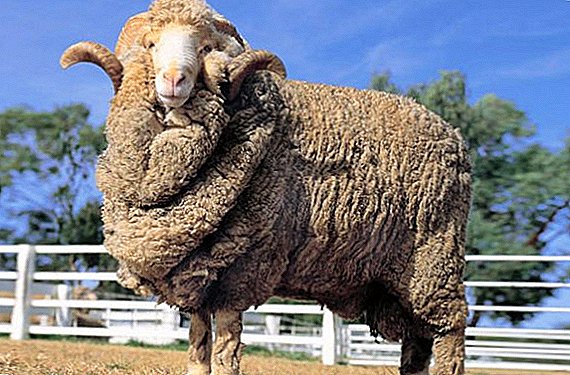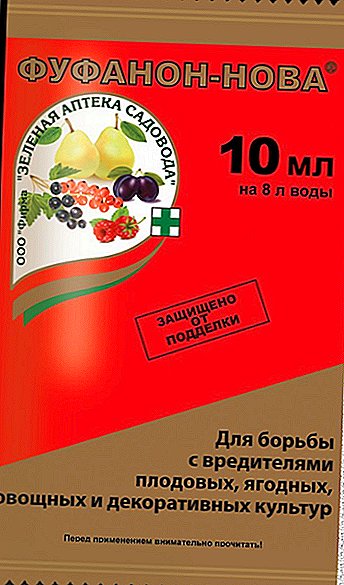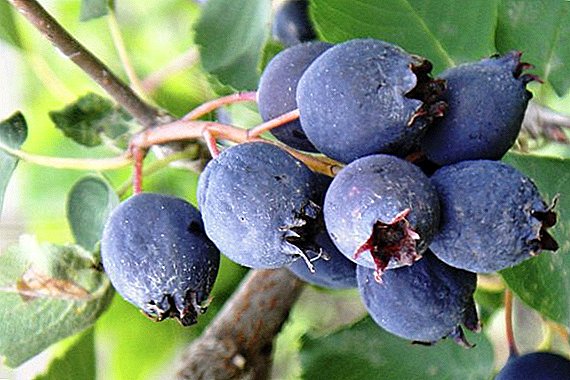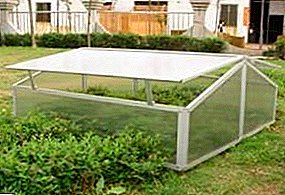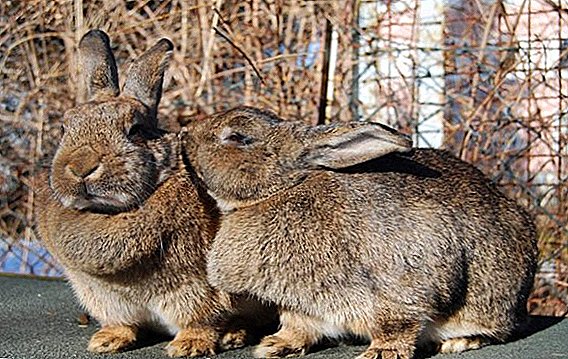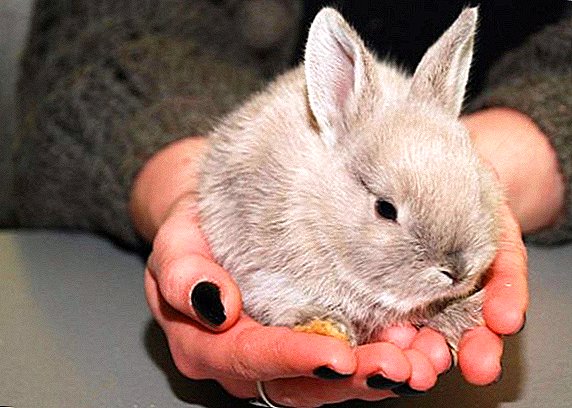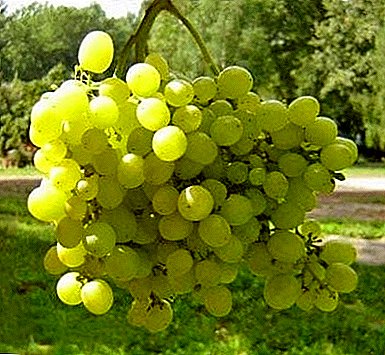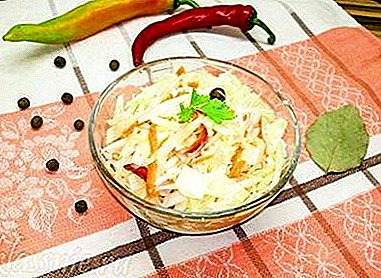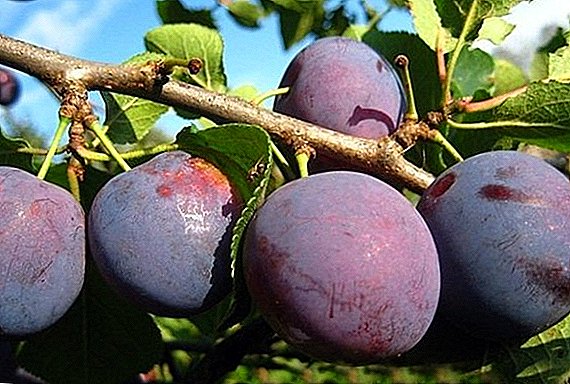 Plum "Anna Shpet" attributed to the record among the garden crops in terms of yield.
Plum "Anna Shpet" attributed to the record among the garden crops in terms of yield.
Every year it gives gardeners tasty, fragrant and juicy fruits, which are used with great success for the manufacture of various dishes, winter preparations or as an independent delicacy.
Inference history
The variety of homemade plum "Anna Shpet" was first received at the end of the XIX century, in 1870. In his random way, by pollinating an unknown sapling, the German botanist Ludwig Shpet was brought out. The biological description of plum was first carried out in 1881.  On the territory of the post-Soviet countries, "Anna Shpet" appeared in the 30s-40s of the last century. It acquired the greatest distribution in the Krasnodar Territory, the North Caucasus region, Kabardino-Balkaria, North Ossetia, the Crimea peninsula, and the southern regions of Ukraine.
On the territory of the post-Soviet countries, "Anna Shpet" appeared in the 30s-40s of the last century. It acquired the greatest distribution in the Krasnodar Territory, the North Caucasus region, Kabardino-Balkaria, North Ossetia, the Crimea peninsula, and the southern regions of Ukraine.
Did you know? In 1947, a plum variety was sent for state testing. In the same year it was included in the state register of Russia in the North Caucasus and the Lower Volga regions.
Tree description
Plum "Anna Shpet" is a durable, hardy tree, whose height can reach up to 5 m. It has a thick, wide crown in the form of a pyramid, powerful shoots, painted in light brown or red-brown color, straight and durable trunk.
Differs tree gray crown and light gray skeletal branches. It has small leaves of elongated shape and loose structure. The surface of the sheet plate of matte texture, slightly pubescent below. Petioles short, up to 0.8 cm, anthocyanin. Stirins no.  During flowering plum appear small inflorescences with two flowers of bell-shaped white color. Petals oval, medium size, tightly pressed to each other. Each flower has 18 stamens.
During flowering plum appear small inflorescences with two flowers of bell-shaped white color. Petals oval, medium size, tightly pressed to each other. Each flower has 18 stamens.
Fruit Description
For 3-5 year after planting the culture gives the first fruits. They have a rather large size, oval or egg-shaped, with a thin but durable skin with veins.
The main color of the fruit is amber, the covering color is purple, with a distinct wax coating. The flesh is very juicy, fibrous structure, light yellow in color. Plum has an excellent, sweet taste, with a delicate sourness, and a bright, rich aroma.
An adult plant each year can produce 100-150 kg of fruit. 
Did you know? One of the disadvantages of this type of plum is that, because of its juiciness, they can crack during ripening, which negatively affects their further storage.
The main characteristics of the variety
"Anna Shpet" - unpretentious in the care and cultivation of the variety, the main advantages of which are early fruiting and high yields.
Learn also about the main characteristics of such varieties of plums as "Honey White", "Eurasia", "Morning", "Stanley", "Peach", "Hungarian".
Drought resistance and winter hardiness
The tree is characterized by medium frost resistance, but it has the ability to recover quickly after the cold weather. Cold climatic conditions do not suit him, since low temperatures adversely affect yields.
The variety is not very demanding to the soil, it can withstand drought quite well. Under the conditions of the steppe regions, the plum grows normally and quite satisfactorily tolerates the lack of moisture. 
Disease and pest resistance
Under cold climatic conditions, it is more difficult for a tree to resist diseases. Plum, which grows on carbonate soils, often suffers from chlorosis, and it is also exposed to the negative effects of red fruit mites, seed moths, sawflies.
To combat them, special preparations are used, for example, Avant or Tagore, which is used to process a tree before it blooms. In the autumn, it is recommended to use Karbofos for the destruction of parasites, and as a prophylactic agent - 3% solution of urea.
Familiarize yourself with the basic rules for growing plums, as well as with proven methods of controlling diseases and pests.
The appearance of gray growths on the fruits and brown spots on the leaves, which subsequently lead to drying of the foliage, indicates moniliosis infection. To fight him, use Bordeaux liquid and pruning sick branches.
At the beginning of summer, especially after large torrential rains, the plant may be affected by red spotting, which manifests itself as yellow-orange spots on the leaves.  An effective method of eliminating the disease is spraying with special preparations, for example, 2% nitrafene solution.
An effective method of eliminating the disease is spraying with special preparations, for example, 2% nitrafene solution.
Important! If you do not attach importance to the manifestation of red blotch, the tree can completely lose the foliage, stop fruiting and weaken greatly.A good way to prevent the infestation of plums by pests is burning of fallen leaves in the fall and digging up the soil.
Pollination
"Anna Shpet" refers to the self-fertile varieties, and even the absence of pollinators can not adversely affect their yield. However, professionals advise to achieve higher rates of cross-pollination with varieties such as "Hungarian", "Catherine", "Renklod", "Peach".
Terms of flowering and ripening
3-5 years after planting plum begins to bear fruit. Flowering takes place in the middle time, starting in mid-April. But the ripening of the fruit rather late: September - October. 
Fruiting and Yield
The rapidness of the plant can be assessed as average, because at the time of fruiting it enters the 3-5 year of its growth, in extreme cases, on the 6th year. The tree has high, systematic yields. Eating fruits can be carried out at one time, as the plums are firmly held on the branches.
On average, the yield from a single tree, depending on its age, is:
- 8-10 years: from 25 to 40 kg;
- 10-12 years: from 45 to 60 kg;
- 13-20 years: from 100 to 150 kg.
After harvesting, the fruit can be kept fresh for a long time in a dark, cool place. Collected plums are recommended to be used raw or used for processing. 
Growing conditions
"Anna Shpet" quite unpretentious plant in the cultivation, but requires compliance with certain rules.
The best time for planting seedlings is considered to be mid-spring, when the earth is already well warmed. Plum does not like windy, dark places, so she needs to find a sufficiently lit, sunny area, without drafts and winds.
The plant survives well on light, loamy, nutrient soils, with groundwater deposition of at least 1.5 m.
You will also be interested to learn about the best varieties of spontaneous plums, with the most popular varieties of Chinese plums, about the best varieties of plums for the Moscow region, about the advantages of colonic plums, with the most popular varieties of yellow plums.
Landing rules
Planted plant in mid-spring, in dry, windless, warm weather. Immediately prior to the planting procedure, plum roots are dipped into a clay mash. Next, dig a hole, size 60x80 cm, the bottom of which is filled with a mixture consisting of 10 kg of humus, 5 kg of soil and 0.5 kg of phosphate.  The seedling carefully, in order not to damage the root system, is lowered into the hole so that the root neck deepens no more than 4-5 cm. Then the plant is tied up to a wooden support, and the ground around it is carefully tamped.
The seedling carefully, in order not to damage the root system, is lowered into the hole so that the root neck deepens no more than 4-5 cm. Then the plant is tied up to a wooden support, and the ground around it is carefully tamped.
At the end of planting the tree watered at least 25 liters of water. After moisture is fully absorbed, the hole is mulched with dry soil or sawdust.
If you need to plant several seedlings at the same time, then you should strictly observe the distance between them or other garden crops:
- between the rows - 3 m;
- between the trees - 2 m.
Seasonal care features
Seasonal plum care includes ensuring proper watering, feeding, pruning, proper preparation for the winter season. 
Watering
In the first year of growth, the tree should be provided with regular, abundant watering, weeding and loosening the soil. When the first flowering appears, over 80% of the flowers should be removed to increase the chances of survival.
An adult plant during the season also needs good watering and mulching of the soil with humus. Watered plum twice a day - in the morning and in the evening, based on one plant the optimal portion in 30-50 liters. Watering frequency - up to 6 times per month.
Important! When wetting you need to make sure that the soil is soaked not less than 25 cm deep.
It is especially important not to allow the ground layer to dry out during active growth. 
Top dressing
Fertilizers need to be a year after plum planting. The tree should receive the first portion of nitrate nitrate in the middle of May, the second - in the middle of June. If in the second year the growth of the tree is too intense, then the top dressing can be reduced to once, only in May.
Before the expected flowering (on the fourth or fifth year) fertilizing with nitrogen is recommended to minimize.
It will be useful for you to learn more about nitrogen fertilizers.An adult tree is fertilized before its budding and after harvesting.

Soil care
Top dressing plums combined with loosening the soil. In addition, throughout the season you need to carefully monitor the emergence of weeds and, if necessary, eradicate them. After weeding the soil is mulched with humus.
It is recommended to pour compost or organic humus on poor sandy lands.
This plum variety is prone to the formation of root shoots, which must be regularly cleaned and removed.
Pruning
Important in the care of "Anna Shpetu" is timely cropping. The first pruning is carried out when planting seedlings: their branches from the bottom are cut to 1/3 of the length. At the beginning of spring, sanitary pruning is carried out, removing, first of all, diseased and damaged branches.  It should also thin out the young shoots, remove the weak and leave only the strongest and most upright. It is very important at the same time not to cut a lot of branches and shoots, no more than 1/4 of the entire mass.
It should also thin out the young shoots, remove the weak and leave only the strongest and most upright. It is very important at the same time not to cut a lot of branches and shoots, no more than 1/4 of the entire mass.
Learn about the main nuances of pruning.
Adult plants are cut annually before bud break. When the tree reaches a height of 2-2.5 m, carry out formative pruning, by removing and thinning vertically growing, curved branches that block access to the fruit. Thus, a spreading and well-lit crown is formed.
In the autumn period, rejuvenating pruning is performed. To do this, remove the broken, diseased and damaged branches, a little cut off the "crown".
Preparing for the winter
It is very important to protect the plum from cold and rodents. To combat the latter, young trees in the late fall are completely covered with PVC mesh or roofing felt. In adults, cover only the pillar and basal circle.  Such activities will help protect the plum, not only from rodents, but also from premature frosts.
Such activities will help protect the plum, not only from rodents, but also from premature frosts.
In the autumn there is a need to lime a pole or treat it with water-based paint. It is recommended to wrap the tree with thick paper or natural fabric from frost.
It is possible to increase the frost resistance of the crop by means of water recharge irrigation, which is carried out at the end of November, before the first frost.
Advantages and disadvantages
Many gardeners love to grow Anna Shpet plum because this variety has many advantages:
- unpretentiousness in leaving and cultivation;
- high yield;
- excellent ability to recover from frost or drought;
- relatively good frost resistance;
- high taste of fruits;
- late dates of ripening plums;
- the possibility of long-term storage of the crop.

Meanwhile, along with the advantages, the variety is not without drawbacks, among which are:
- cracking fruit;
- some difficulty in harvesting;
- friability of wood.
"Anna Shpet" - unpretentious, high-yielding variety of plums, which is very popular with modern gardeners. The fruits of the tree are tasty, fragrant, fleshy, which have earned a high tasting evaluation and have found wide application in cooking, traditional medicine, and also as an independent healthy delicacy.


